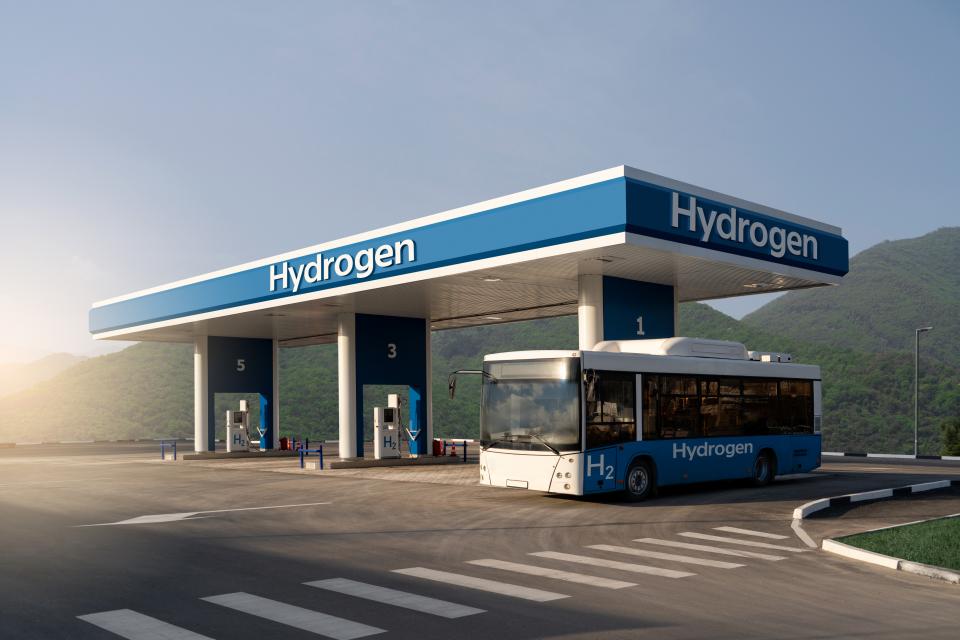Technology Overview
Hydrogen is the most abundant and simple element in the universe, making it a particularly attractive option for delivering and storing clean energy. Hydrogen fuel can be used to generate electricity, power homes and vehicles, in batteries, and other applications.
But on Earth, hydrogen can only be found in combination with other elements, such as water (H2O), which means it needs to be extracted. Hydrogen is commonly produced by splitting water into hydrogen and oxygen using an electric current, in a process called proton-exchange membrane water electrolysis. If the electricity is produced using renewable energy, such as solar or wind, the process can be entirely carbon-free. But using an electrolyzer to produce hydrogen is expensive. Electrolyzers use lots of energy and require catalysts made from scarce precious metals like platinum and titanium.
A Fuel Cell that Produces and Stores Hydrogen
To solve this problem, Pacific Northwest National Laboratory developed a hydrogen fuel cell that can both produce hydrogen and store it. Called a redox-flow cell—a hybrid between an electrolyzer and a redox-flow battery device—this new method replaces the inefficient oxygen electrode with an Fe2+/Fe3+ (iron redux reaction) catholyte and eliminates the need to use precious metal catalysts. The device is equipped with a regeneration cell that replenishes the Fe2+ ions through renewable resources, allowing for continuous production of hydrogen gas.
Hydrogen can be produced with clean energy—such as electricity from a wind turbine when it’s abundant and cheap—then stored for later use. When the electricity is no longer available, the stored hydrogen passes through a fuel cell to generate electricity again.
Application
Redox-Flow Cell provides both hydrogen producers and end-users—like fuel cell refueling stations and industrial electricity generator manufacturers—with a low-cost, carbon-free, and efficient way of producing hydrogen.
Advantages
This new hydrogen production method is more affordable, cleaner, and more sustainable than other forms of hydrogen production.
- Low-Cost and Sustainable. Eliminates the use of costly and scarce precious metal catalysts, such as platinum.
- More Efficient. The redox-flow cell uses about half the voltage of a traditional electrolyzer to produce hydrogen.
- Carbon-Free. Renewable energy can supply the necessary electricity to produce hydrogen.
- Better Durability. This method is more durable under harsh operating conditions.
State of Development
This patented method of producing hydrogen is available for licensing and can be used across a wide variety of energy applications.
